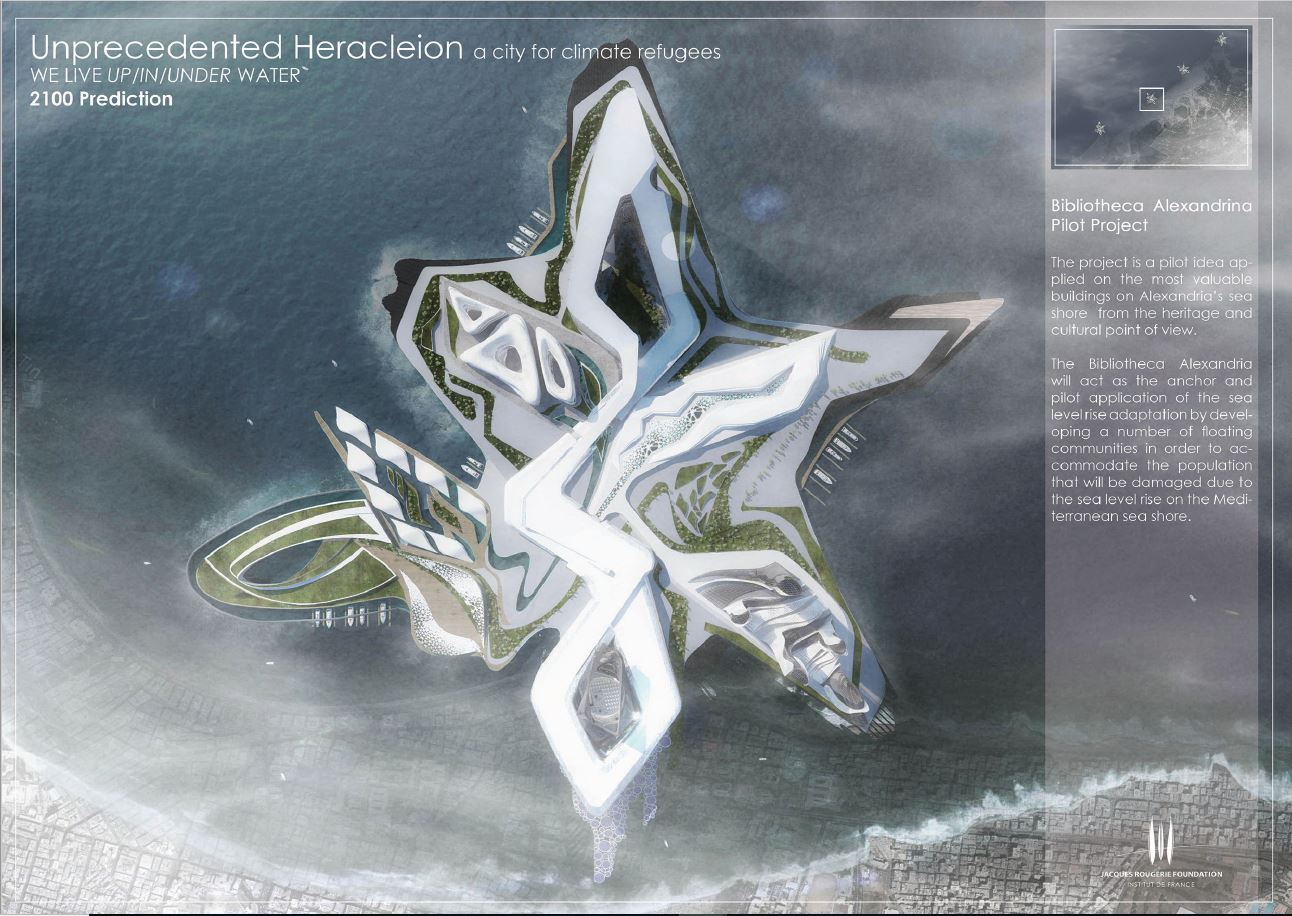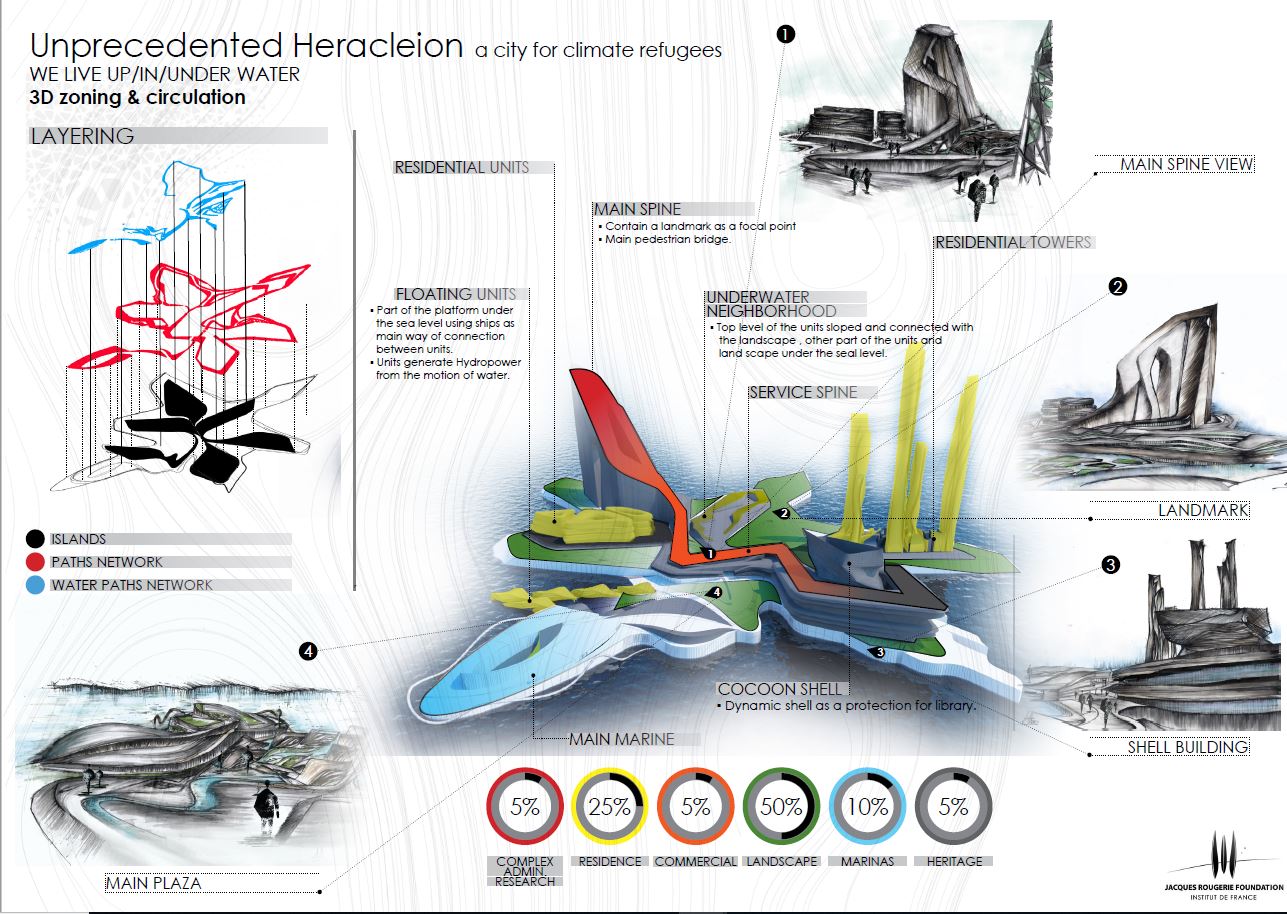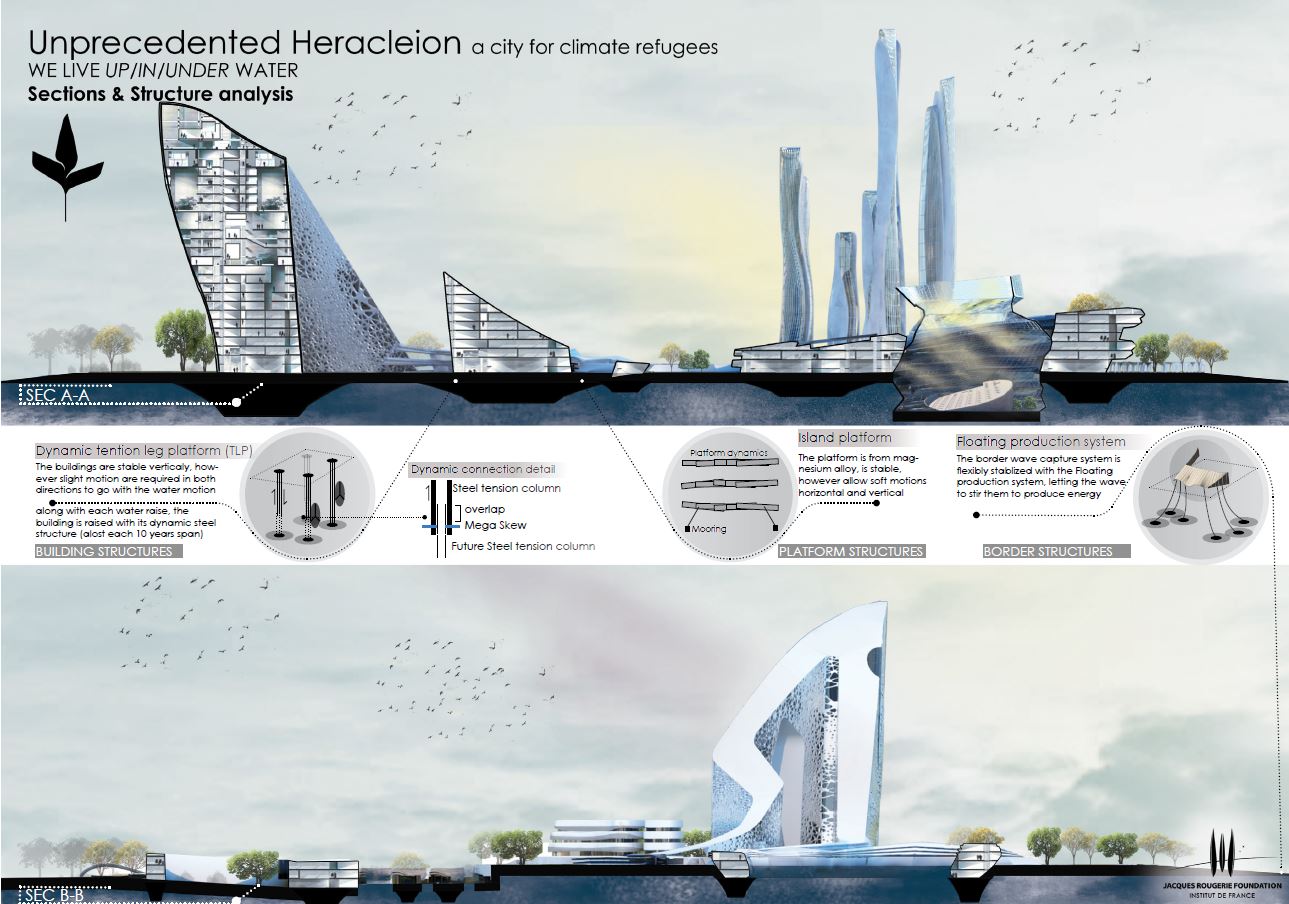The Threat of Rising Sea Levels
Climate change is an ongoing problem that’s causing serious environmental issues all over the globe. One of the most pressing of which is rising sea levels, which is quickly becoming a threat requiring action before it’s too late. The issue becomes especially urgent as world populations continue to grow, particularly in vulnerable locations like Egypt’s Nile Delta. For this reason, proactive measures need to be taken for populations to be able to adapt to the changing conditions of the planet.
The coastal region of the Nile Delta is considered one of the top five countries most threatened by rising sea levels due to its low elevation, with the World Bank predicting that 25% of it will sink below sea level causing roughly 10% of the population to lose their homes (World Bank, 2009 and UNDP, 2013).
Proactive Vs. Reactive Solutions
Thus far, efforts to deal with the issue have been mostly reactive and rudimentary in nature, such as building seawalls along shorelines and using barriers on beaches. However, these methods are reactive and environmentally taxing making them ineffective solutions in the long-run. The approach for addressing this problem needs to be adaptive and durable and ensure longevity for the way of life.
Luckily, a group of leading architects and scientists have come up with an approach that could prove effective, not only for the Nile Delta but for all cities facing the threat of rising sea levels and erosion. This is where the concept of “Self-sustaining floating cities” was first introduced. This concept suggests that cities would not only be floating as an adaptive method but also be self-sufficient and have minimal to negative environmental impact by harnessing the energy that natural resources like the sun, wind and water produce.
A City for Climate Refugees
An example of a conceptual city like this is one that the Department of Urban Design and Planning at Ain Shams University in Cairo submitted to a competition by The Jacques Rougerie Foundation on sustainability. The floating city concept, titled ‘Unprecedented Heracleion – A City for Climate Refugees’, suggests an adaptive design that would be comprised of a number of floating communities that would act not only to accommodate to those losing their homes to rising sea levels but also as an anchor to preserve cultural and heritage landmarks. Ahmed Osama, the lead designer of the team, explained the central goal behind the design “We wanted to focus on a solution that not only functions as a new home for people and heritage buildings but also takes into consideration sustainability from a social, environmental, and emerging technologies standpoint.”


Their concept aims to develop a single cell (floating community) which would evolve over time to form a larger network of interconnected cells – a floating city. The city aims to be resilient not only by adapting to changing conditions but also by harnessing the numerous environmental elements to ensure the survival of the populations inhabiting it. This would include using floating units equipped with piston-sand dynamos and tidal turbines to harness an enormous amount of hydropower. Another sustainable element would be using solar farm panels designed to utilise the large amount of sun exposure the region enjoys, and floating biodiversity farms as a source of organic produce with a water trap irrigation system from sea water. The smart and sustainable design of the interconnected floating communities aims to give people the best quality of life while also reducing the overall environmental impact on the planet.

Ultimately, it’s my opinion that although the threat of rising sea levels may not seem so immediate to us today, it doesn’t mean that we shouldn’t be thinking ahead for the well-being of our future generations. It’s imperative for us to be open to new ideas and emerging technologies and do our part in adopting behaviours that are more in line with solving a problem while it’s still manageable, instead of waiting until it’s too late.
